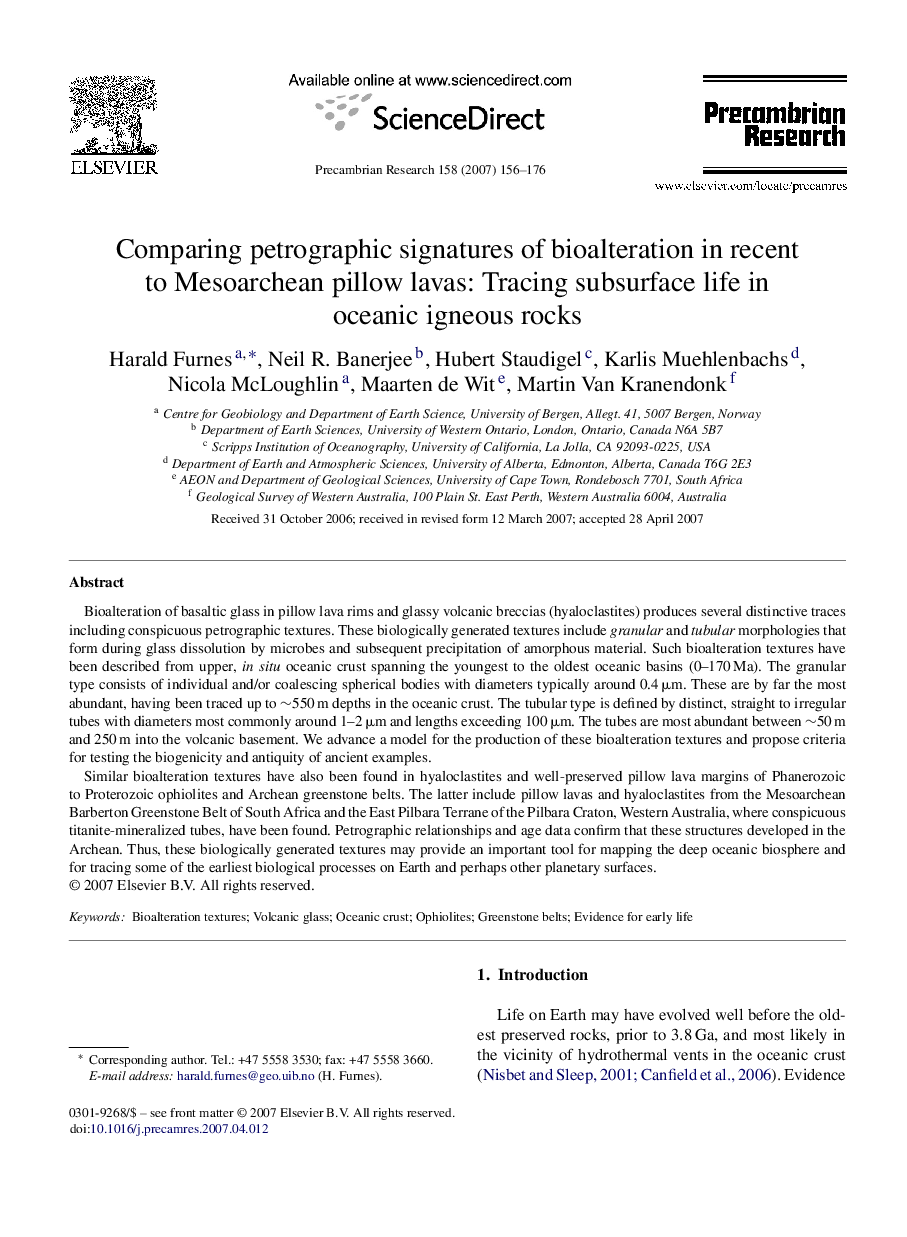| کد مقاله | کد نشریه | سال انتشار | مقاله انگلیسی | نسخه تمام متن |
|---|---|---|---|---|
| 4724349 | 1639713 | 2007 | 21 صفحه PDF | دانلود رایگان |

Bioalteration of basaltic glass in pillow lava rims and glassy volcanic breccias (hyaloclastites) produces several distinctive traces including conspicuous petrographic textures. These biologically generated textures include granular and tubular morphologies that form during glass dissolution by microbes and subsequent precipitation of amorphous material. Such bioalteration textures have been described from upper, in situ oceanic crust spanning the youngest to the oldest oceanic basins (0–170 Ma). The granular type consists of individual and/or coalescing spherical bodies with diameters typically around 0.4 μm. These are by far the most abundant, having been traced up to ∼550 m depths in the oceanic crust. The tubular type is defined by distinct, straight to irregular tubes with diameters most commonly around 1–2 μm and lengths exceeding 100 μm. The tubes are most abundant between ∼50 m and 250 m into the volcanic basement. We advance a model for the production of these bioalteration textures and propose criteria for testing the biogenicity and antiquity of ancient examples.Similar bioalteration textures have also been found in hyaloclastites and well-preserved pillow lava margins of Phanerozoic to Proterozoic ophiolites and Archean greenstone belts. The latter include pillow lavas and hyaloclastites from the Mesoarchean Barberton Greenstone Belt of South Africa and the East Pilbara Terrane of the Pilbara Craton, Western Australia, where conspicuous titanite-mineralized tubes, have been found. Petrographic relationships and age data confirm that these structures developed in the Archean. Thus, these biologically generated textures may provide an important tool for mapping the deep oceanic biosphere and for tracing some of the earliest biological processes on Earth and perhaps other planetary surfaces.
Journal: Precambrian Research - Volume 158, Issues 3–4, 5 October 2007, Pages 156–176